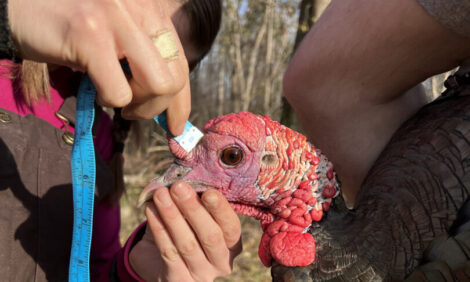



Trends in Remote and Mobile Information Access Technologies
As access to the Internet becomes more commonplace and more mobile, the ability to gather information from anywhere has moved from being a luxury to being an essential part of doing business, writes Sim Harbert from the Georgia Tech Research Institute.This past July, IT professionals from across the poultry industry gathered for the 2011 Information Systems seminar in Ponte Vedra Beach, Florida, to learn more about this growing trend. Sponsored by the US Poultry & Egg Association, the seminar focused on emerging information technologies such as remote monitoring and data gathering, virtual desktops and web applications, and remote data access.
Marcel Cohen of M-Tech Systems provided an excellent overview of the latest technologies available for remote data capture and management. His presentation focused on methods for obtaining data from remote locations, in particular data from the production side of the processing chain such as grow-out environmental conditions and feed consumption. Even if there are sensors or systems to gather the data in the remote location, that data is not being fully exploited without some system for relaying it to where it is needed.
Cohen discussed a number of communication systems to relay the data such as combinations of Wireless/Bluetooth, Cellular/GPRS, satellite, or wired technologies. In addition to more common sensors for measuring temperature or humidity, new sensor systems were discussed such as a system to measure bird weight during grow-out.
All of the data is great but it is not useful unless there is software to analyze and present it in a way that can be of use either during production and processing, or later, for forecasting and planning.
Data analysis tools were discussed, and the presentation also covered some specific examples where feed conversion statistics were calculated by incorporating the bird weight measurement system with a number of other sensors and data sources.
Cohen concluded with examples of what he envisions for the future of remote data collection and analysis by discussing web apps that integrate location and mapping and what is possible by using camera systems for monitoring bird production.
The need for seamless access to applications such as word processors and spreadsheets continues to grow as the workforce becomes more mobile. Instead of installing these applications locally on a laptop or other mobile device, there are a number of options to access them remotely. One option is to use a “lightweight” local client on the laptop or mobile device that accesses the applications running on a remote server in a virtual desktop environment. The server can host many of these virtual desktops for multiple users.
Another option is to run the word processing or other application as a web app. In this case, only a browser would be required to access the applications on a laptop or mobile system.
The author gave short talks covering virtual desktop options and Google Apps, one of the most well-known web application office suites available. The use of virtual desktops and web applications was also discussed in several short presentations and round-table discussions at the seminar, giving attendees a great chance to learn more about how other companies have implemented these systems and solutions.
Another noteworthy presentation, ‘Remote Access,’ by Alan Brownell of Case Farms, covered more generally the key issues associated with allowing employees access to company data on the road, at home, or even from remote company sites.
Brownell mentioned some of the main reasons for setting up remote access: accommodating travelling sales staff or other managers, disaster recovery/business continuity, telecommuting, remote IT Support (reverse remote access), and even vendor support. Once a need is established, there are remaining questions that need to be addressed including how the access is set up, what access is allowed, how corporate policy is handled, legal considerations such as workers’ compensation and other laws/regulations, and the ever-present issues with keeping everything secure. Brownell’s talk was a great reminder of all the issues associated with implementing a remote access plan.
These are just a few examples illustrating the kinds of topics covered in presentations and discussions at the seminar. The next Information Systems Seminar hosted by the US Poultry & Egg Association will be in July 2012. For more information, please click here.
Reprinted from PoultryTech, a publication of the Agricultural Technology Research Program of the Georgia Tech Research Institute, a programme conducted in cooperation with the Georgia Poultry Federation with funding from the Georgia Legislature.
February 2012








